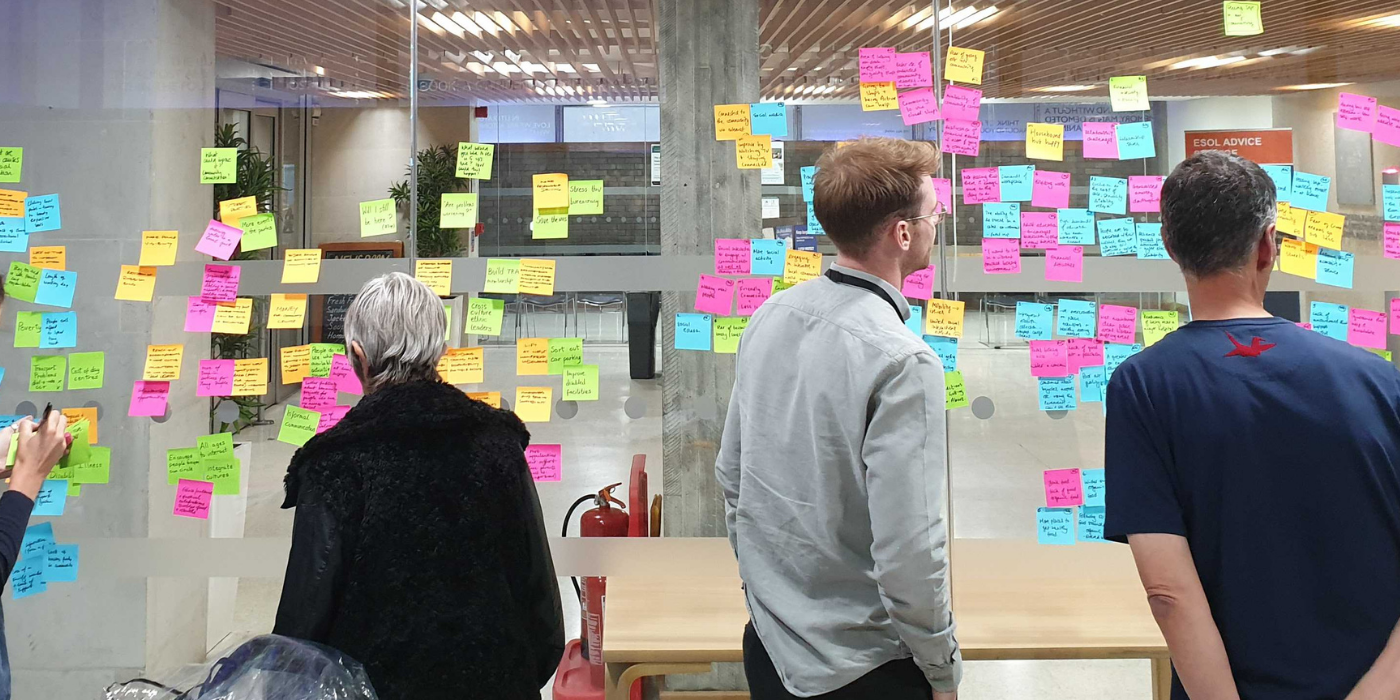Being a service designer for over ten years, I've often found myself most effective in the strategic thinking at the Discovery stage of work. However, when I joined an Alpha team at TPXimpact, it wasn't immediately clear how service design fitted into this phase. This large team of about 12, which included other design specialists, was building on a Discovery I wasn't involved in, meaning, I had to figure out where my skills could best add value.
I worked with this team for 18 months, seeing the service through to live — the longest I've been part of a delivery team as an external consultant. These reflections share how I eventually found my place as a service designer in Alpha, and beyond, and what I learned. I’ve also shared my definitions for service design activities at this stage of service delivery.
It’s all in the onboarding
As an initial step, successful onboarding was extremely important to how I was able to establish and fully understand my role in Alpha. This was especially the case when joining a team without having been part of Discovery work.
When joining my new team, I first went about understanding where to add value by reviewing the statement of work that had been agreed with the client, and going back to my job description to align my skills and responsibilities with the project stage I had been assigned to. What may seem like an obvious task was a helpful reminder that each organisation you work for may define your role and skills in a slightly different way, so it’s always worth checking what skills and responsibilities could be expected within different stages of delivery. Even within government digital roles, you will find different variations of expectations between programmes and departments.
As the only service designer on the project, I also reached out to fellow service designers in my extended network who had worked on similar projects to gain insights. At TPXimpact I’m fortunate to be part of an established community of practice where I can connect with other service designers in this way outside my own project.
Defining service design activities in Alpha
I explored various service design activities to ensure our work remained user-focused and strategic, thinking about important elements of the service standard, such as “solve a whole problem for users,” and “make sure everyone can use the service.”
The key activities which I was able to define during Alpha included:
-
Defining a service vision: Kicking off Alpha work by defining our service vision, mission, outcomes and goals to help the team align direction and priorities from the start.
-
Updating the service blueprint: Adding the necessary detail to the high level, aspirational service blueprint I’d inherited from the Discovery to bring it to the next level, including concepts for testing, specific roles and people for the back-end processes and capabilities, and documenting ongoing findings from user research.
-
Agreeing service patterns: Researching and defining which service patterns were applicable to share with the team and gaining early consensus to build on testing and learning from similar services elsewhere.
-
Exploring service platforms: Supporting work to understand the best and most appropriate channels for users to complete specific tasks through user research and testing of various options.
-
Addressing key service challenges: Highlighting which Discovery insights were end-to-end and exploring different solutions to solve these during Alpha to find the best ways to meet user needs, e.g. challenges such as digital maturity or user engagement.
-
Designing support models: Capturing what needed to happen in scenarios where the service might not work as intended, or when users ventured off a defined ‘happy path’ or expected user journey. This led to the design of a support model as the service moved towards Live.
-
Focussing on offline interactions: Ensuring that we didn't forget offline interactions such as collaboration and communication via letters or even phone calls, which can often get left behind by product development teams. This meant working collaboratively with the User Researcher, Interaction Designer, and Content Designer on the team to test potential solutions with users.
-
Capturing key performance indicators (KPIs): Thinking about how we defined and measured the success of the service, designing KPIs with clear links back to our service outcomes. This meant ensuring that the team defined what we would be measuring, how, and who would be responsible.
By proactively defining and championing these service design activities, I found we not only were able to meet immediate delivery needs, but also continuously kept work aligned in ways that would best meet user needs.
Prioritising and aligning work
Working with project leadership, such as my Design Lead, Product Owner and Delivery Manager, I found going through my list of service design activities in Alpha was helpful for them to prioritise work and responsibilities, especially as I was working alongside other design specialists.
This also contributed to the foundation of our delivery roadmap in Alpha. This gave the team clear milestones, decisions, and swim lanes for each design discipline's work that helped everyone visualise who was responsible for what and when.
Through this work, I found that while many of my listed activities couldn't be completed within a single sprint, we could break them down into smaller sets of actions, organised through a tool like Jira, and updated through the regular cadences of working collaboratively in an agile team. This allowed these activities to be managed alongside and in-sync with the work of the rest of the delivery team.
This approach was particularly helpful given the holistic nature of service design, which looks across the entire user journey and organisational processes, sometimes making it feel a step removed from the more granular, sprint-level tasks of product or feature development. The challenge here was always ensuring that my broader service design priorities, like defining service patterns or designing support models, remained integrated and relevant to our team's daily delivery rhythms, rather than becoming isolated strategic exercises that failed to help the team make progress in building and scaling a viable product.
Navigating your own service design work
Service design is a continuous process, and what I've learned from this experience is that its value extends far beyond the initial Discovery phase. It not only deserves a dedicated space in Alpha and beyond, but it can thrive when integrated carefully into service delivery at all stages of product development. So, as you navigate your own projects, consider: how are you carving out and making the space for service design in every stage of development?
Our recent design blog posts
Transformation is for everyone. We love sharing our thoughts, approaches, learning and research all gained from the work we do.
-

-

Naming services in complex situations
Read blog post -

Using inclusive research approaches with Blood Cancer UK
Read blog post -

Designing for users who don’t exist (yet)
Read blog post

